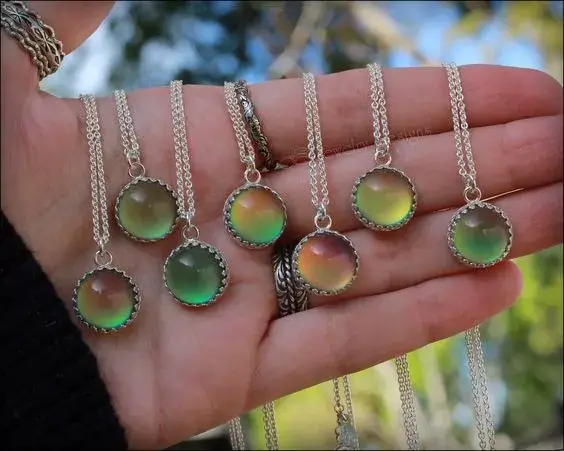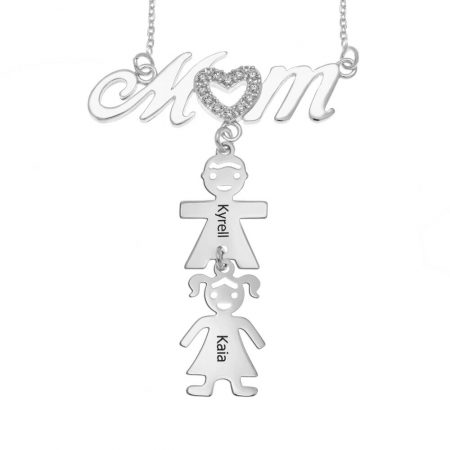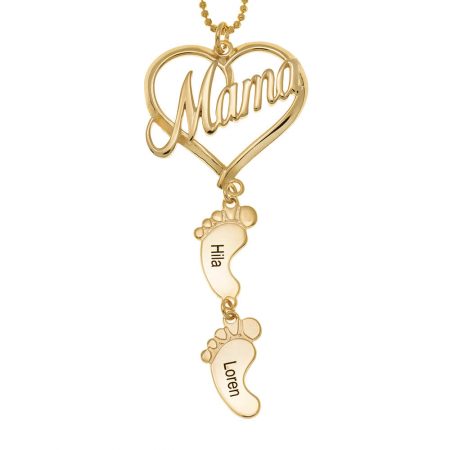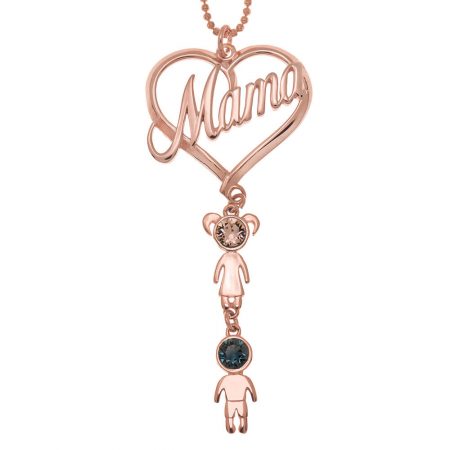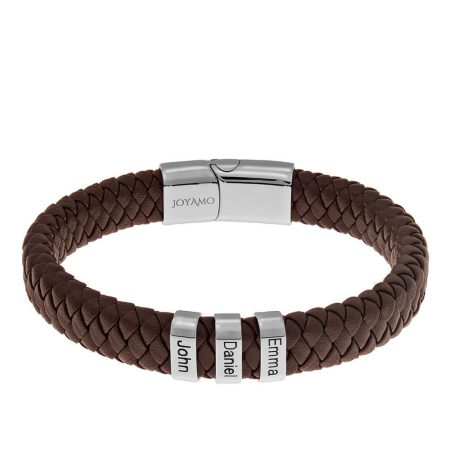Mood necklaces have captivated wearers for decades with their mesmerizing color changes, believed to reflect the wearer’s emotional state.
Let’s explore the intriguing world of mood necklace colors, deciphering their meanings and unraveling the mysteries behind their transformative hues.
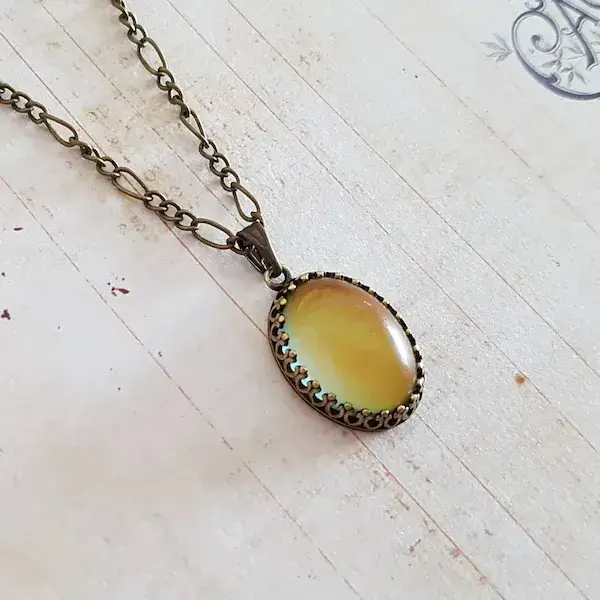
I. The Origins of Mood Necklaces
Mood necklaces have remained a timeless fascination, captivating wearers with their enchanting color changes that are thought to mirror the wearer’s emotional landscape.
These accessories, often adorned with thermochromic crystals or liquid crystals, have intrigued generations with their ability to shift hues in response to changes in temperature, purportedly reflecting shifts in the wearer’s mood.
Let’s explore together the intriguing world of mood necklace colors, aiming to decode their symbolism and unravel the mysteries behind their transformative shades.
What makes mood necklaces particularly fascinating is their enigmatic ability to transition through a spectrum of colors, ranging from cool blues and tranquil greens to warm yellows and fiery reds.
Each color holds its significance, believed to offer insights into the wearer’s emotional state and innermost feelings.
The interpretation of mood necklace colors often draws from cultural symbolism and psychological associations with different hues.
For instance, blue is commonly associated with feelings of calmness, serenity, and introspection, while red may symbolize passion, excitement, or intensity.
Green is often linked to growth, harmony, and balance, whereas yellow may evoke emotions of happiness, optimism, and energy.
Understanding the meanings behind these colors can help wearers gain a deeper understanding of their own emotions and reactions, as well as those of others around them.
It’s important to note that the interpretation of mood necklace colors can be highly subjective and may vary from person to person.
While some may find solace in the calming hues of blue, others may interpret the same color as a sign of sadness or melancholy.
Factors such as individual preferences, cultural backgrounds, and personal experiences can all influence how colors are perceived and interpreted.
Despite the inherent ambiguity surrounding mood necklace colors, their allure lies in their ability to spark curiosity, ignite conversations, and inspire introspection.
Worn as a cute accessory or a tool for self-reflection, mood necklaces continue to enchant wearers with their mesmerizing transformations, inviting them to explore the intricate tapestry of human emotions through the language of color.
Mood necklaces have remained a timeless fascination, captivating wearers with their enchanting color changes that are thought to mirror the wearer’s emotional landscape.
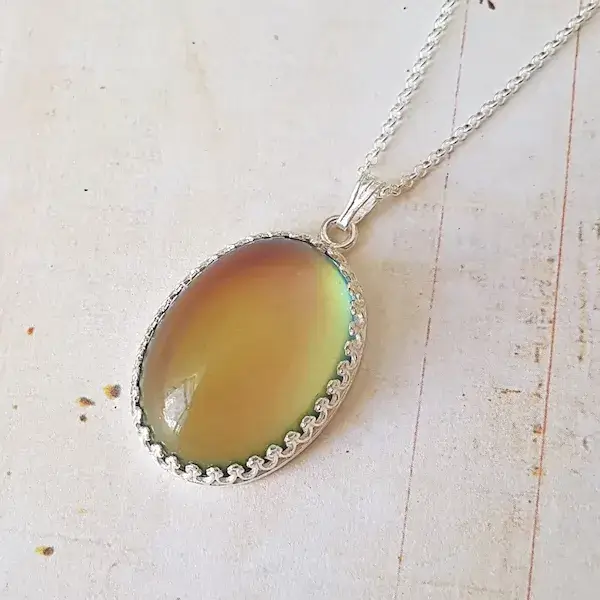
II. Understanding Mood Necklace Colors
For many the allure of mood necklaces lies in their captivating color transformations that supposedly mirror shifts, in emotions.
Examining the symbolism and significance associated with each color present in these accessories reveals an array of meanings spanning from calming blues to passionate reds.
The color blue, commonly linked with tranquility and serenity plays a role in mood necklaces.
It conveys a feeling of peace, introspection, and emotional steadiness.
Individuals may find comfort in the shades of blue as it provides a sanctuary from the hustle and bustle of life while promoting relaxation.
On the hand red symbolizes passion, intensity, and thrill. It represents energy and vitality evoking sentiments of longing, love, and ambition.
When a mood necklace transitions to shades of red it could suggest heightened emotions, fervent excitement, or romantic yearning.
Green embodies growth, harmony, and equilibrium. It signifies the rejuvenation of life and the interconnectedness among all living beings.
Mood necklaces adorned with hues might indicate a period of development or renewal along, with achieving inner harmony within oneself and the world around them.
Yellow exudes warmth, optimism, and happiness. Reminiscent of sunshine and laughter. Uplifting moods while instilling positivity.
When a mood necklace turns yellow it could indicate feelings of joy, positivity, and a lively spirit encouraging individuals to embrace each moment with excitement.
Purple represents mystique, spirituality, and creativity. It signifies change and enlightenment prompting introspection and self-discovery.
Mood necklaces featuring hues may represent a journey of growth inner reflection and the pursuit of deeper understanding.
Looking at how different colors, in mood necklaces relate to states allows wearers to peek into their inner emotions.
By grasping the meaning behind each color individuals can uncover insights into their world promoting self-awareness and contemplation.
Adorned with calming blues reds or bright yellows mood necklaces act as reflections of one’s self—a chance for wearers to delve into the complex spectrum of human emotions, through the language of colors.
Mood ring color chart
| Color | Meaning |
|---|---|
| Blue 🔵 | Calmness, tranquility, relaxation |
| Green 🟢 | Balance, harmony, contentment |
| Yellow 🟡 | Optimism, happiness, energy |
| Orange 🟠 | Creativity, excitement, enthusiasm |
| Red 🔴 | Passion, love, intensity |
| Purple 🟣 | Mystery, spirituality, intuition |
| Pink 💗 | Affection, romance, friendship |
| Black ⚫ | Tension, stress, anxiety |
| White ⚪ | Clarity, purity, innocence |
| Brown 🟤 | Groundedness, stability, practicality |
| Gray 🔘 | Indecision, neutrality, detachment |
III. Deciphering Mood Necklace Color Meanings
Mood necklaces have captured the fascination of wearers for decades, intriguing them with their ability to change colors in response to shifts in body temperature.
While these color changes may seem like mere novelty, they are believed to hold deeper meanings and insights into the wearer’s emotional state.
Let’s discover together the symbolic significance of various colors found in mood necklaces, examining their interpretations through the lenses of popular belief, cultural symbolism, and psychological implications.
Blue 💙
The color blue is commonly linked to feelings of peace, tranquility, and relaxation. It signifies a state of calmness and emotional steadiness offering a break from the hustle and bustle of life. When a mood necklace shifts to shades of blue it could suggest a moment of peace and self-reflection encouraging the wearer to embrace a mindset and find comfort in the present.
Green 💚
Green symbolizes equilibrium, harmony, and satisfaction. It embodies the interconnectedness of all living beings. Represents beginnings. Mood necklaces displaying tones may indicate a phase of growth inner balance and a connection with nature. Green urges individuals to strive for a rounded lifestyle while appreciating the beauty, around them.
Yellow 💛
Yellow exudes positivity and joyfulness. The sunny hue symbolizes joy and positivity lifting spirits and fostering a sense of happiness. When a mood necklace shifts to tones it could represent a burst of enthusiasm, optimism, and a lively approach to life. Yellow inspires the wearer to seize growth opportunities and pursue their dreams with passion.
Orange 🧡
Orange represents creativity, excitement, and passion. It sparks innovation and motivation igniting the imagination and fueling inspiration. If a mood necklace displays shades of orange it may signify a surge of energy and an eagerness to explore possibilities. Orange encourages wearers to embrace curiosity in life’s journey and welcome the unknown with arms.
Red ❤️
The color red symbolizes love, passion, and intensity. It stirs feelings of desire, romance, and fervor. When a mood necklace turns red it could indicate emotions and an unwavering longing, for connection. Red urges individuals to follow their heart’s desires and pursue their dreams with determination.
Purple 💜
Purple signifies mystery, spirituality, and intuition. It embodies transformation and enlightenment while inviting wearers to explore their thoughts. A purple mood necklace with hues could represent a journey of self-discovery inner wisdom and heightened intuition. Purple prompts the wearer to trust their instincts and welcome the enigmas of the universe.
Pink 💗
Pink symbolizes affection, romance, and friendship. It evokes feelings of warmth, compassion, and emotional bonds. When a mood necklace changes to shades of pink it may signify love ties and the value of nurturing relationships. Pink encourages the wearer to express emotions and foster meaningful connections with others.
Black 🖤
Black signifies tension, stress, and anxiety. It embodies the conceals emotions in darkness. Mood necklaces adorned with shades might suggest turmoil or emotional struggles. Black urges the wearer to confront fears and anxieties while seeking clarity and resolution.
White ⚪
White represents clarity, purity, and innocence. It embodies freshness and new beginnings by washing away the past and shining light on the path. When a mood necklace turns white it could indicate a start and readiness for change. White inspires wearers to embrace possibilities with openness and optimism.
Brown 🟤
Brown is often associated with a sense of groundedness, stability, and practicality. It is likened to the earth providing a feeling of security and stability, to those who wear it. Mood necklaces featuring shades of brown may suggest a desire for stability and an emphasis on aspects of life. Wearing brown can encourage individuals to stay connected to reality and take steps toward achieving their objectives.
Gray 🔘
Gray is a color that conveys indecision, neutrality, and detachment. It represents ambiguity and uncertainty indicating a lack of direction or commitment. Mood necklaces adorned with shades of gray might signify conflict or emotional detachment. Gray prompts individuals to delve into their emotions make decisions decisively and gain clarity.
The meanings associated with various colors found in mood necklaces are as diverse and nuanced as human emotions themselves.
Deciphering these color meanings can help wearers gain insights into their emotional landscapes and navigate the complexities of their inner worlds with greater clarity and understanding.
With shades of blue, green, yellow, or any other hue, mood necklaces serve as powerful tools for self-expression and introspection, inviting wearers to explore the depths of their emotions and embrace the journey of self-discovery.

IV. Interpreting Mood Necklace Color Charts
Mood necklaces have captivated people for generations, with their enchanting color transformations believed to mirror changes in the wearer’s mood.
To understand the significance of these color shifts many enthusiasts refer to charts that explain mood necklace colors.
These charts act as a guide to interpret the meanings associated with each color providing insights into the wearer’s emotions and state of mind.
Common mood necklace color charts typically showcase a variety of colors each carrying its representation.
Consulting these charts individuals can dive deeper into their world and decipher the messages conveyed by their mood-enhancing accessories.
An essential aspect of interpreting mood necklace color charts involves acknowledging that the meanings of colors may differ across societies and eras.
For instance in some societies white may symbolize purity and innocence whereas in others it could signify mourning or loss.
Moreover, these charts may evolve alongside shifts in norms and perspectives.
For example certain colors that used to be linked with feelings might start to be seen in a positive light and the opposite could also happen.
New colors might be introduced to mirror evolving trends or shifts in awareness.
Despite these changes, color charts for mood necklaces act as aids for self-examination and contemplation.
By exploring the significance tied to each color individuals can gain insights into their journeys and the underlying reasons behind their actions.
This increased awareness can equip people to tackle life’s obstacles with clarity and comprehension.
It is worth mentioning that while mood necklace color charts offer a guide for interpretation, personal encounters and connections with colors can differ from person to person.
What rings true for one individual may not necessarily hold for another.
Wearers must rely on their instincts and emotions when deciphering the messages conveyed by their mood accessories.
Mood Chart Heat Activated
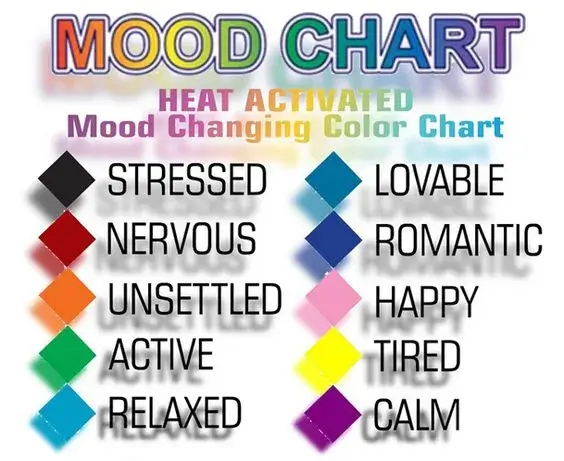
V. How Mood Jewelry Works
Mood jewelry like mood necklaces and mood rings catches the eye of those who wear them with their ability to change colors based on shifts in body temperature.
The magic behind this lies in a captivating chemical reaction called thermochromism, which was initially uncovered by German scientist Otto Lehmann in the 19th century.
Thermochromism involves materials altering their color when exposed to temperature changes.
In the case of mood jewelry, these materials hidden within the jewelry react to variations in the wearer’s body heat leading to color transformations that anyone can see.
The essential element of mood jewelry is the thermochromic substance— a crystal or leuco dye.
These substances have structures that can reversibly change with temperature fluctuations.
As temperatures increase these molecular changes cause the material to interact with light differently resulting in a color shift.
In mood jewelry, the thermochromic substance is enclosed within a layer incorporated into a transparent resin.
This arrangement ensures that the substance remains secure and functional while still being able to respond to the wearer’s body heat.
As the temperature of the wearer’s skin shifts the thermochromic material responds accordingly creating a display of colors ranging from soothing blues and greens to yellows and reds.
Otto Lehmann, a pioneering physicist and chemist is renowned for his discovery of liquid crystals back in 1888.
His groundbreaking research unveiled the characteristics of crystals such as their ability to reorient in response to temperature changes.
This significant finding laid the groundwork for the development of thermochromic materials and their applications across industries, including mood-enhancing jewelry.
Today mood jewelry continues to individuals of all ages with its enchanting color transformations and mystical charm.
While the scientific principles behind mood jewelry may be rooted in chemical processes its allure lies in its capacity to inspire awe and stimulate curiosity.
Mood-enhancing jewelry serves as a symbol of the captivating fusion between science, artistry, and human sentimentality.
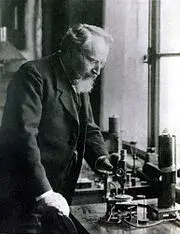
VI. Exploring the Connection of Mood Jewelry
People have been fascinated by mood necklaces and mood rings due to their captivating ability to change colors reflecting the wearer’s emotions.
These accessories use technology that reacts to body temperature resulting in color changes that are believed to represent shifts in mood.
By comparing mood necklaces and mood rings we can see the appeal they hold.
Both pieces provide a way for individuals to express themselves and delve into their emotions through art.
While mood necklaces are traditionally worn around the neck mood rings are worn on fingers offering a personal way to convey one’s mood.
Even though they differ in appearance both mood necklaces and rings share a language of color symbolism.
Blue often symbolizes calmness green represents balance red signifies passion and yellow exudes optimism.
These color meanings go beyond these accessories providing insight into the world of mood-enhancing jewelry.
Although there might be variation, in how colors are interpreted between, mood necklaces and rings the core principles remain constant.
Both pieces encourage wearers to explore their emotions and accept the changing nature of human feelings.
Embellished with calming blues, intense reds, or lively yellows mood jewelry acts as a prompt of the nature of human feelings encouraging individuals to delve into the diverse range of emotions that shape their existence.
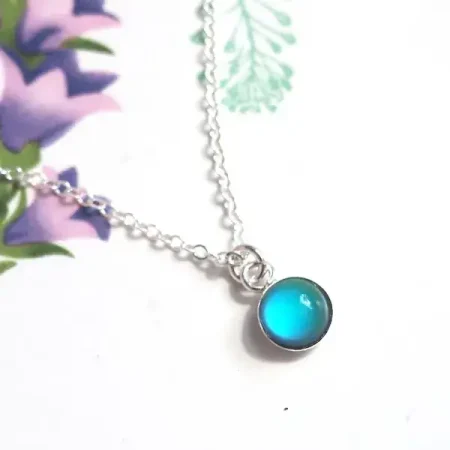
💡 Mood necklace colors meaning FAQs
📌 What do the colors on a mood necklace mean?
The colors displayed on a mood necklace are thought to represent states. For instance, blue is often linked to feelings of calm and peace while red signifies passion and intensity. These color interpretations are based on beliefs and cultural symbols offering wearers a glimpse, into their emotions and moods.
📌 Do mood necklaces actually work?
The effectiveness of mood necklaces is a topic of discussion. While some individuals trust that the color changes accurately mirror their state others attribute these shifts to factors like body temperature or surroundings. There is evidence supporting the reliability of mood necklaces leading to uncertainties regarding their actual impact.
📌 How do mood necklaces tell your mood?
Mood necklaces typically incorporate thermochromic materials that change color in response to variations in body temperature. When the wearer’s body heat increases or decreases the crystals within the necklace respond by adjusting their structure causing a color change. Although these alterations are often perceived as reflections of mood, their connection to states is subjective and can differ from person to person.
📌 What do the different colors on a mood ring mean?
The interpretations linked with the colors displayed on a mood ring closely resemble those associated with mood necklaces. For example, the color blue is often linked to feelings of peace and serenity whereas green is commonly associated with equilibrium and peacefulness. The color red tends to symbolize emotions like love and excitement, while yellow typically brings about a sense of positivity and joy. These meanings stem from perceptions and cultural connotations providing individuals with insights into their world.
 SHIPPING
SHIPPING
